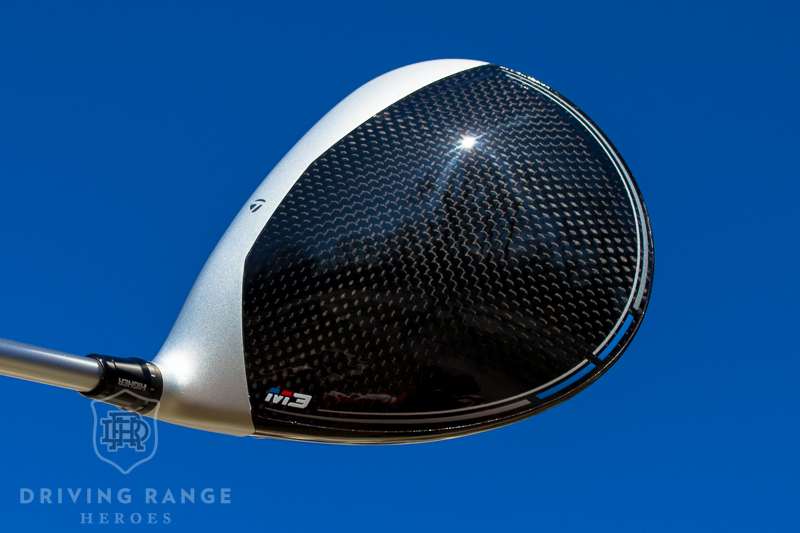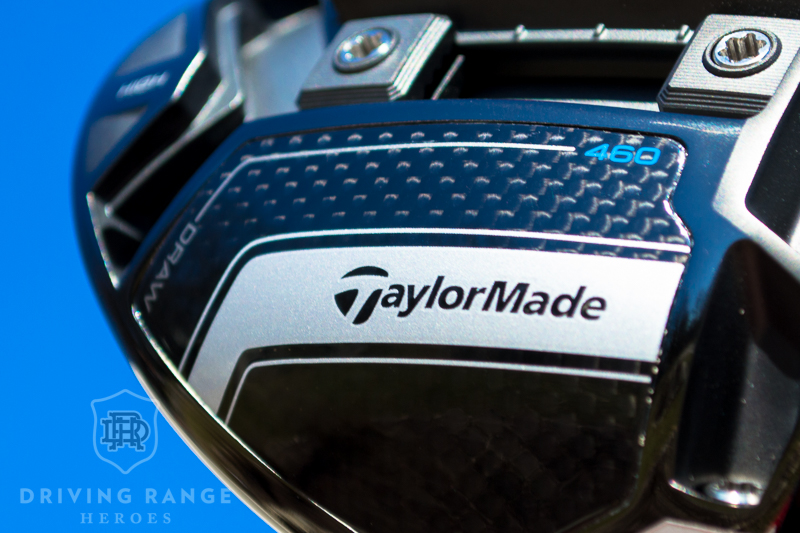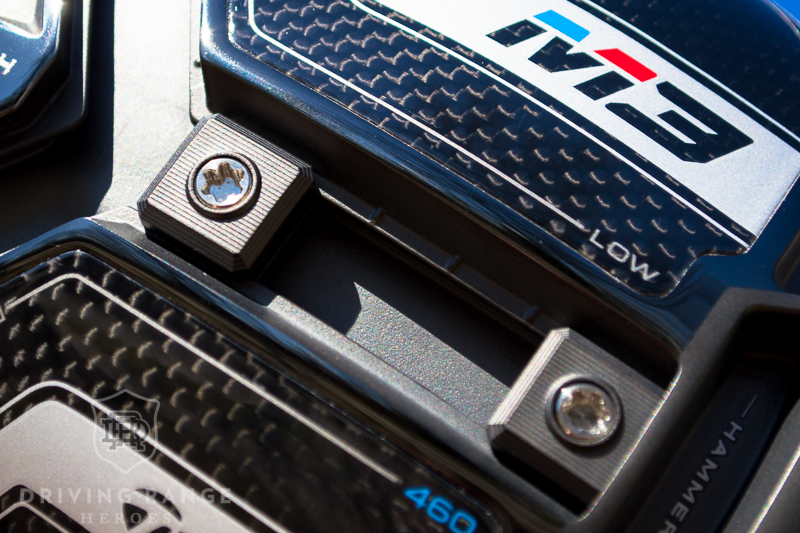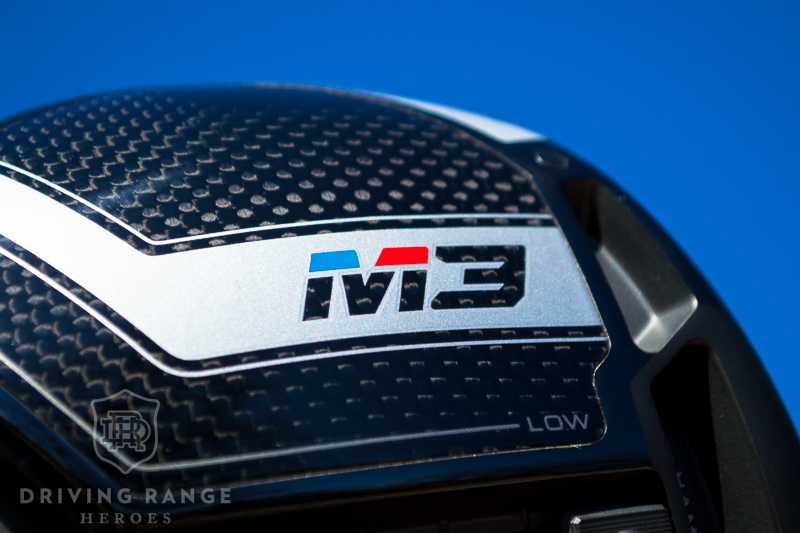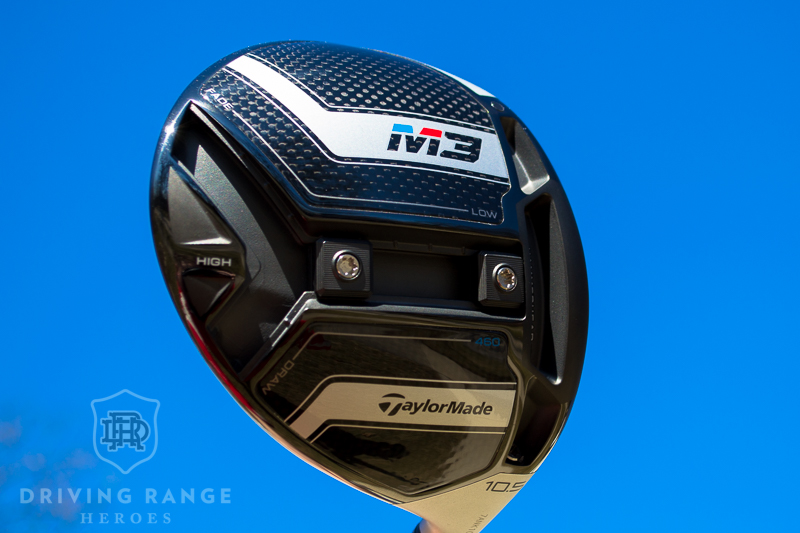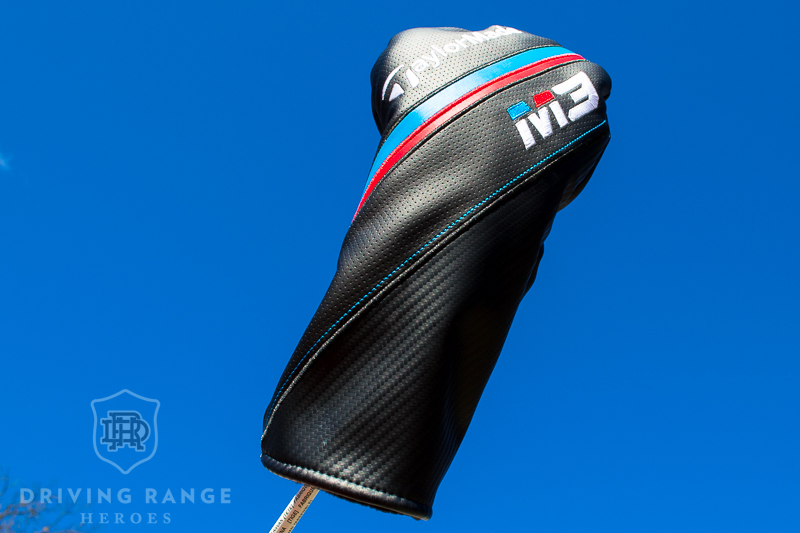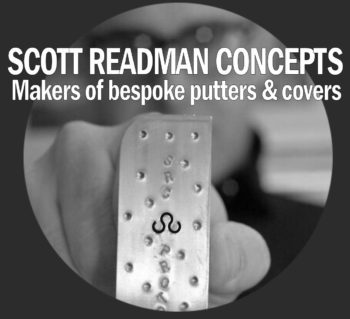TaylorMade M3 Driver
Unsurprisingly, the TaylorMade M3 driver was one of the most anticipated drivers of the 2018 season. Following a successful run of movable weights, the M3 driver has an updated “Y-Track” weight system in addition to the new Twist Face and Hammerhead Slot. These new elements bring precision adjustability and performance gains for a wide spectrum of golfers. More specifically, TaylorMade believes this new design will greatly benefit amateur golfers. There’s a lot to cover with the TaylorMade M3 driver so let’s dive right in.

First Impressions
The TaylorMade M3 driver has a very similar profile at address to the 460cc M1 drivers from the previous two seasons. The M3’s shape is on the rounder side with a little bit of bulge toward the face. Neither of these characteristics are extreme but are worth noting. At address, I also find the toe to sit up a little bit, but it’s consistent with the previous M1 models.
If you’re a TaylorMade fan, you likely immediately caught the new color scheme of the M3 driver. After two seasons of white/black carbon contrasts TaylorMade went with silver in place of white. The M3/M4 paint scheme has switched to a classy red, white, and blue which gives the club kind of a racing look. I like the overall look of the M3 a lot, but jury’s still out on whether or not I prefer the white or the silver. Both colors look pretty slick.

How Does it Feel?
Feel is an area where TaylorMade has been quite successful over the past few seasons. After a strong showing from the 2017 M1 driver, TaylorMade made a few updates to update the feel of the M3. Like the M1, the M3 driver utilizes multi-material construction as well as the built-in weight track to control the center of gravity and feel of the club. The biggest difference that impacts feel is the new Hammerhead Slot.
Well-struck shots feel very solid and provide a lot of feedback in your hands, and plenty of pop. I know you know that feeling. The previously mentioned Hammerhead Slot is a big reason for this feel. First, the Hammerhead Slot is designed to expand the sweet spot and make the M3 more forgiving across the face. Additionally, the Hammerhead Slot reinforces the M3’s face so TaylorMade is able to push the limits of the entire face’s thickness. The end result is a hotter and forgiving face.
My biggest takeaway was the dreaded toe and heel shots had much more life to them. You know that shot. It looks ok, but you know it felt dead and like you’re going to lose yards. With the M3 driver, I found those shots that would normally feel dead had some spring to them and like they had a chance of survival. I’m not claiming everything is as wonderful as a shot off the sweet spot, but there is a noticeable improvement in the feel and performance quality of these misses.

How Does it Sound?
Like the feel, the TaylorMade M3 driver has a very solid and pronounced sound. I found the previous generations of TaylorMade drivers to have a more “lightning crack” tone on a good shot, whereas I found the M3 driver to have a little more of that boastful canon sound that lets people across the driving range know you just ripped a driver. I tell you what though, when you catch the M3 square, it sounds like an absolute missile and is pretty satisfactory. As I mentioned before, the whole face is impressively forgiving. The M3’s sound follows suit. Historically, a driver’s heel and toe shot have a sound that indicates missing the center. With the M3 driver, that tone is still slightly different but much closer to normal than you would regularly expect on that miss.
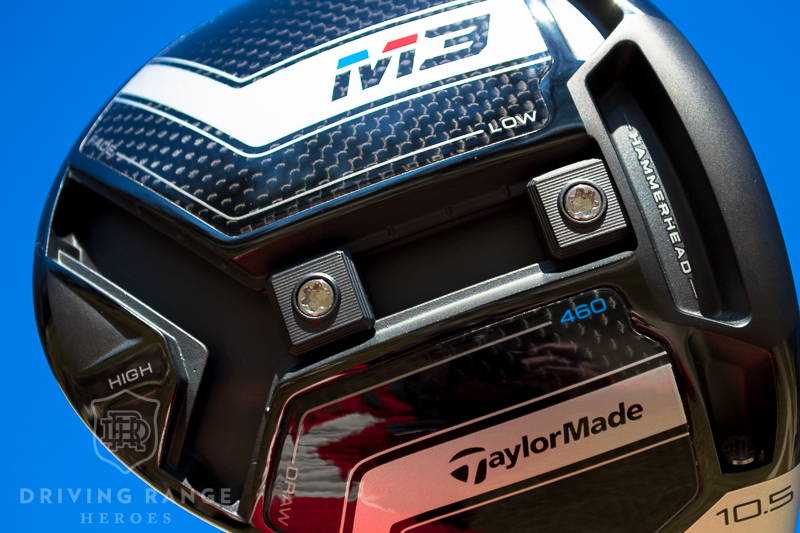
On-Course Performance
| Club Speed | Ball Speed | Launch Angle | Spin | Carry (Yds) | Total (Yds) |
|---|---|---|---|---|---|
| 111.6 | 164 | 9.6º | 1590 | 263.1 | 303.4 |
There are really two main performance factors to dive into with the TaylorMade M3 driver – the Y-Track and the Twist Face. From a general driver perspective, the M3 performs great, has plenty of length, and will be best optimized through a proper fitting. As you can see above, my data was plenty strong and I could certainly survive with the M3 as is. Between selecting the correct shaft and the adjustment versatility the Y-Track gives you, it’s pretty easy to optimize the performance of the M3.
Y-Track
As mentioned, the M3 driver’s Y-Track really gives you the ability to get the ball flight you’re looking for. By moving the weights all the way forward, you can hit low ropes with next to no spin. Should you want more spin and higher launch, you can move the weights toward the rear of the club. For maximum launch, you would throw the weights all the way back into the Draw and Fade positions. By selecting any combination in between, you can get the spin and launch you want while also assisting with your fade and draw bias. Per my experience, this tech really works, but is best when explored with a fitter so as to make educated positioning decisions and realize the full potential.
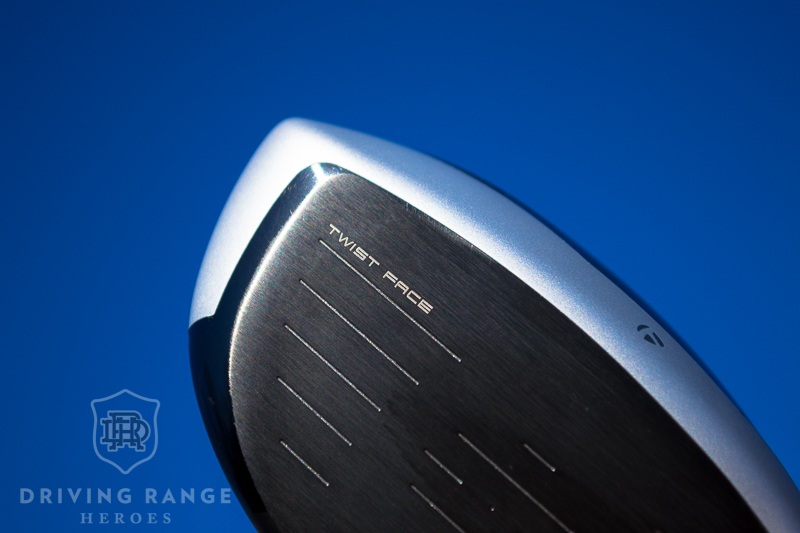
Twist Face
Ah yes, TaylorMade’s Twist Face! A lot has been made of the Twist Face tech in the new TaylorMade M3 driver. Reading around the internet, everyone seems to have both favorable and non-favorable opinions on if this works. I’m happy to report I have an honest and unbiased opinion on it. Below is TaylorMade’s explanation of the Twist Face design:
Twist Face presents a revolutionary new face curvature with a corrective face angle on off-center hits, engineered to reduce side spin and deliver straighter shots. By providing more loft in the high-toe and less loft in the low-heel, this groundbreaking technology produces more consistent side spin in the areas where golfers commonly mis-hit.
If you have a slice or hook swing path, unfortunately, the Twist Face isn’t going to save you from slicing three fairways over. Trust me, I’ve lived it. Where the Twist Face makes a difference is when you have a squared face at impact but miss the center of the face. Those low heel or high toe shots traditionally die quick, painful deaths in all sorts of directions. TaylorMade’s Twist Face now gives those shots better launch and they maintain their ball speed better. This means the end result is a MUCH more serviceable shot than most other drivers. Did the Twist Face revolutionize my game? No, BUT it did make a very noticeable difference on mishit shots that made me a believer and kept me alive out there more than once.

Final Thoughts
In my experience, there are two questions that seem to always come out of a review. 1) Is this driver worth upgrading to from last year’s model? 2) Will it make me a better golfer? Of course the answers to both of those questions are subjective, but my gut reaction to both is “yes” in regards to the TaylorMade M3 driver. There are a lot of attributes in TaylorMade M3 driver that make it appealing to a wide range of golfers and I would recommend it to any skill level looking to get fit for a new driver. I do believe the M3’s Y-Track is a better weight system than previous models. That adjustability will only make it easier to optimize the M3 to your swing. The Twist Face is a great bonus safety net. Hopefully we all find the center of the face every time and don’t need the Twist Face, but that’s not reality. After playing a couple of rounds with the Twist Face, I found myself saying “I tell you what, this thing makes a difference and I’m glad I have it.”
Stock TaylorMade M3 Driver Review Specs
| Loft | Length | Swing Weight | Head Volume |
Stock Flex |
RH/LH |
|---|---|---|---|---|---|
| 8.5º, 9.5º, 10.5º, 12º | 45.5″ | D4 | 460cc | X, S, R, A | RH / LH (only in 9.5º & 10.5º) |



